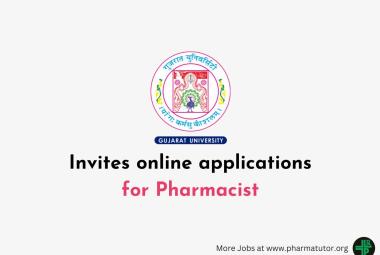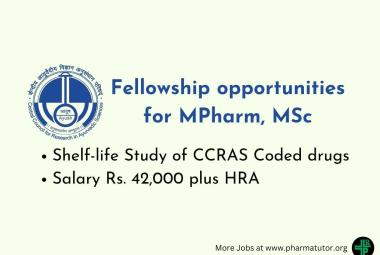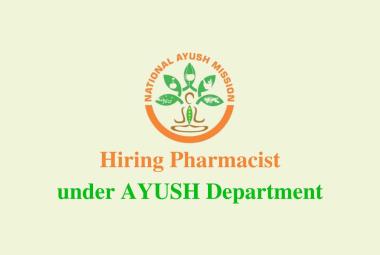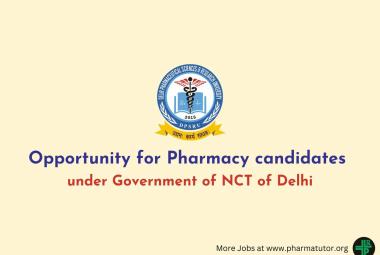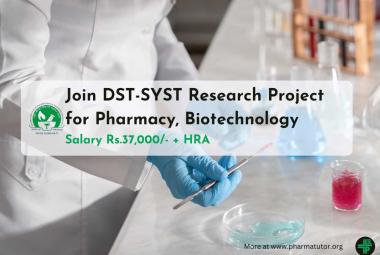{ DOWNLOAD AS PDF }
 ABOUT AUTHOR:
ABOUT AUTHOR:
Nirlep kaur
Institute of pharmaceutical sciences,
Kurukshetra University, Kurukshetra, Haryana, India
Nirlep10@gmail.com
ABSTRACT
Delivery of drug through Transdermal route represents a most convenient and novel approach. Transfersomes were found to be more effective as they render controlled release of drug due to depot formation in skin and were more effective in transdermal delivery. Transfersomes are applied to the skin and permeate through the stratum corneum lipid lamellar regions as a result of the hydration and osmotic force in the skin. Transfersomes have been widely used as a novel carrier for transdermal drug delivery. The Transfersomes can be evaluated by in vitro for vesicle shape and size, entrapment efficiency, degree of deformability, number of vesicles per cubic mm. Transfersomes enhances the penetration of most of the low as well as high molecular weight drugs. When tested in artificial systems transfersomes can pass through even tiny pores (100 nm) which are 1500 times smaller. The use of transfersomes carrier results in delivery of high concentration of active agents through the skin, regulated by system composition and their physical characteristics. Thus, this novel technique has got a great potential for overcoming current problems faced by the conventional techniques.
[adsense:336x280:8701650588]
REFERENCE ID: PHARMATUTOR-ART-2285
|
PharmaTutor (ISSN: 2347 - 7881) Volume 2, Issue 12 How to cite this article: N Kaur; Transdermal Drug Delivery through Carriers: Transfersomes; PharmaTutor; 2014; 2(12); 77-85 |
INTRODUCTION
Delivery via the Transdermal route is an interesting option in this respect because a Transdermal route is convenient and safe. This offers several potential advantages over conventional routes [1] like avoidance of first pass metabolism, predictable and extended duration of activity, minimizing undesirable side effects, utility of short half-life drugs, improving physiological and pharmacological response, avoiding the fluctuation in drug levels, inter-and intra-patient variations, and most importantly, it provides patients convenience. The Transdermal route of drug delivery has gained more interest of pharmaceutical research, as it prevent number of side effects associated with oral route of drug administration. Vesicular systems are one of the most controversial methods for Transdermal delivery of drug. The interest in designing Transdermal delivery systems was relaunched after the discovery of elastic vesicles like transferosomes, ethosomes, cubosomes, phytosomes, etc. The term Transfersome concept was introduced in 1991 by Gregor Cevc. The name means ‘carrying body’ and is derived from the Latin word ‘transfere’ meaning ‘to carry across’ and the Greek word ‘soma’ for a ‘body’. [2]
A new vesicular derivative, the “transfersomes”, has paved the way to decreases the defective Transdermal permeation of a number of low and high molecular weight drugs, which has been found to be one of the major improvements in vesicle research. [3- 4]
SILENT FEATURES [5-7]
- Transfersomes possess an infrastructure consisting of hydrophobic and hydrophilic moieties together and as a result can shows drug molecules with wide range of solubility.
- Transfersomes can deform and pass through narrow constriction (from 5 to10 times less than their own diameter) without any measurable loss.
- This high deformability gives better penetration of intact vesicles.
- Transfersomes can act as a carrier for low as well as high molecular weight drugs e.g. analgesic, antifungal, anesthetic, corticosteroids, sex hormone, anticancer, insulin, gap junction protein, and albumin.[2]
- Transfersomes are biocompatible and biodegradable as they are made from natural phospholipids similar to liposomes.
- Transfersomes have high entrapment efficiency and in case of lipophilic drug near to 90%.
- Transfersomes protect the encapsulated drug from metabolic degradation.
- They act as depot, releasing their contents slowly and gradually.
- They can be used for both systemic as well as topical delivery of drug.
- Easy to scale up, as procedure is simple, do not involve lengthy procedure and unnecessary use or pharmaceutically unacceptable additives.
[adsense:468x15:2204050025]
TRANSFERSOMES VS OTHER CARRIER SYSTEMS [8-19]
- Transfersomes appear to be remotely related to lipid bilayers vesicle, liposomes. They differ vastly from commonly used liposomes in that they are much more flexible and adaptable. The extremely high flexibility of their membrane permits transfersomes to squeeze themselves even through pores much smaller than their own diameter. This is due to high flexibility of the transfersomes membrane.
- The high resulting aggregate deformability permits transfersomes to penetrate the skin spontaneously. This tendency is supported by the high transfersomes surface hydrophilicity that enforces the search for surrounding of high water activity.
- It is almost certain that the high penetration potential of the transfersomes is not primarily a consequence of stratum corneum fluidization by the surfactant because micellar suspension contains much more surfactant than transfersomes (PC/Sodium cholate 65/35 w/w %, respectively). Thus, if the penetration enhancement via the solubilization of the skin lipids was the reason for the superior penetration capability of transfersomes, one would expect an even better penetration performance of the micelles. In contrast to this postulate, the higher surfactant concentration in the mixed micelles does not improve the efficacy of material transport into the skin. On the contrary, mixed micelles stay confined to the top most part of the stratum corneum even they are applied non- occlusively.[2]
- The reason for this is that mixed micelles are much less sensitive to the transepidermal water activity gradient than transfersomes. Transfersomes differ in at least two basic features from the mixed micelles, first a transfersomes is normally by one to two orders of magnitude (in size) greater than standard lipid micelles. Secondly and more importantly, each vesicular transfersomes contains a water filled core whereas a micelle is just a simple fatty droplet. Transfersomes thus carry water as well as fat-soluble agent in comparison to micelles that can only incorporate lipoidal substances.
- Table 1 describes the advantages and disadvantages of different vesicular approaches.[8, 9, 16, 12, 14]
Table 1: Shows comparison of Transfersomes with other vesicular system.
|
S. No |
METHODS |
ADVANTAGES |
DISADVANTAGES |
|
1. |
Penetration enhancers |
Increase penetration through skin and give both local and systemic effect. |
Skin irritation Immunogenicity, only for low molecular weight drugs |
|
2. |
Physical methods e.g. Iontophoresis |
Increase penetration of intermediate size charged molecule |
Only for charged drugs, transfer efficiency is low |
|
3. |
Liposomes (Hadgraft & Guy, 1989) |
Phospholipid vesicle, biocompatible, biodegradable |
Less skin penetration less stable |
|
4. |
Proliposome |
Phospholipid vesicle, more stable than liposomes |
Less penetration, cause aggregation |
|
5. |
Niosomes (Schreier & Bouwstra, 1994) (Holland et al, 1995) Proniosomes |
Non-ionic surfactants vesicles, greater stability, Will convert into niosome in situ. Stable. |
Less skin penetration easy handling But will not reach up to deeper skin Layer |
|
6. |
Transfersomes and Protransfersomes (Cevc et al, 1996) |
More stable, high penetration due to high deformability, biocompatible and biodegradable, suitable for both low and high molecular weight and also for lipophilic as well as hydrophilic drugs and reach upto deeper skin layers. |
None, but for some limitations |
MECHANISM OF ACTION
The mechanism for penetration is the generation of “osmotic gradient” due to evaporation of water while applying the lipid suspension (Transfersomes) on the skin surface. The reason for this high flux rate is naturally occurring "transdermal osmotic gradients" i.e. another much more prominent gradient is available across the skin. [2, 6] The transport of these elastic vesicles is thus independent of concentration. The trans-epidermal hydration provides the driving force for the transport of the vesicles. As the vesicles are elastic, they can squeeze through the pores in stratum corneum (though these pores are less than one-tenth of the diameter of vesicles) as shown in Figure1.

Figure1: Transfersomes are ultradeformable (up to 105 times that of conventional liposomes) squeezing through small pores in the Subcutaneous. [25]
Two mechanisms of action have been proposed: [4]
1. Transfersomes act as drug vectors, remaining intact after entering the skin.
2. Transfersomes act as penetration enhancers, disrupting the highly organized intercellular lipids from stratum corneum, and therefore facilitating the drug molecule penetration in and across the stratum corneum.
Cevc and coworkers proposed the first mechanism, suggesting that deformable liposomes penetrate the stratum corneum because of the transdermal hydration gradient normally existing in the skin, and then cross the epidermis, and enter the systemic circulation. [7] The recent studies propose that the penetration and permeation of the vesicles across the skin are due to the combination of the two mechanisms. Depending on the nature of the active substance (lipophilic or hydrophilic) and the composition of the transfersomes, one of the two mechanisms prevails.
Propensity of penetration: The magnitude of the transport driving force, of course, also plays an important role: Flow = Area x (Barrier) Permeability x (Trans-barrier) force. Therefore, the chemically driven lipid flows across the skin. Always decreases dramatically when lipid solution is replaced by the same amount of lipids in a suspension. [3]
Product development of transfersomes: Scope of transfersomes is mainly intended for topical application although other routes may be considered for further investigations. Drug should be selected in such a way that it fits in the criteria of topical delivery. It should have ideal limits for aqueous solubility, lipophilicity, molecular size, melting point and pH of the aqueous saturated solution.
NOW YOU CAN ALSO PUBLISH YOUR ARTICLE ONLINE.
SUBMIT YOUR ARTICLE/PROJECT AT editor-in-chief@pharmatutor.org
Subscribe to Pharmatutor Alerts by Email
FIND OUT MORE ARTICLES AT OUR DATABASE
MATERIALS [15-18]
- Phospholipids – ( Vesicles forming component)
Example - Soya phosphatidyl choline.
- Surfactant – ( For providing flexibility)
Example – Sodium cholate, Sodium deoxycholate, Tween-80, Span-80
- Alcohol –(As a solvent)
Example - Ethanol, methanol
- Buffering agent – (As a hydrating medium)
Example- Saline phosphate buffer (pH 6.4)
- Dye - {for Confocal scanning laser microscopy (CSLM)}
Example- Rhodamine 123, Nile-red
METHODS:

Figure 2: methods of preparation of transfersomes [26]
A. Thin film hydration technique is employed for the preparation of transfersomes which comprised of three steps:
1. A thin film is prepared from the mixture of vesiclesforming ingredients that is phospholipids and surfactantby dissolving in volatile organic solvent (chloroform, methanol).Organic solvent is then evaporated abovethe lipid transition temperature (room temp. for pure PCvesicles, or 50°C for dipalmitoyl phosphatidyl choline)using rotary evaporator. Final traces of solvent wereremoved under vacuum for overnight.
2. A prepared thin film is hydrated with buffer (pH 6.5) by rotation at 60 rpm for 1 hr at the corresponding temperature. The resulting vesicles were swollen for 2 hr at room temperature.
3. To prepare small vesicles, resulting vesicles were sonicated at room temperature or 50°C for 30 min. Using a bath sonicator or vortex shaker or probe sonicated at 4°C for 30 min. The sonicated vesicles were homogenized by manual extrusion 10 times through a sandwich of 200 and 100 nm polycarbonate membranes.
B. Modified hand shaking, lipid film hydration technique is also founded for the preparation of transfersomes which comprised following steps:
1. Drug, lecithin (PC) and edge activator were dissolved in ethanol: chloroform (1:1) mixture. Organic solvent was removed by evaporation while hand shaking above lipid transition temperature (43°C). A thin lipid film was formed inside the flask wall with rotation. The thin film was kept overnight for complete evaporation of solvent
2. The film was then hydrated with phosphate buffer (pH 7.4) with gentle shaking for 15 minute at corresponding temperature. The transfersome suspension further hydrated up to 1 hour at 2-8°C. [13, 21]
OPTIMIZATION OF FORMULATION CONTAINING TRANSFERSOMES [13]
There are various process variables which could affect the preparation and properties of the transfersomes. The preparation procedure was accordingly optimized and validated. The process variables are depending upon the procedure involved for manufacturing of formulation. The preparation of transfersomes involves various process variables such as,
- Lecithin: surfactant ratio
- Effect of various solvents
- Effect of various surfactants
- Hydration medium
Optimization was done by selecting entrapment efficiency of drug. During the preparation of a particular system, the other variables were kept constant.
CHARACTERIZATION OF TRANSFERSOMES [17-20]
Entrapment Efficiency: The entrapment efficiency is expressed as the percentage entrapment of the drug added. Entrapment efficiency was determined by first separation of the unentrapped drug by use of mini- column centrifugation method. After centrifugation, the vesicles were disrupted using 0.1% Triton X-100 or 50% n-propanol. The entrapment efficiency is expressed as: Entrapment efficiency= (amount entrapped/ total amount added) ×100
Vesicle Diameter: Vesicle diameter can be determined using photon correlation spectroscopy or dynamic light scattering (DLS) method. Samples were prepared in distilled water, filtered through a 0.2 mm membrane filter and diluted with filtered saline and then size measurement done by using photon correlation spectroscopy or dynamic light scattering (DLS) measurements.
Vesicle Shape & Type: Transfersomes vesicles can be visualized by TEM, phase contrast microscopy, etc. The stability of vesicle can be determined by assessing the size and structure of vesicles over time. Mean size is measured by DLS and structural changes are observed by TEM.
Number of Vesicle per cubic mm: This is an important parameter for optimizing the composition and other process variables. Non-sonicated transfersome formulations are diluted five times with 0.9% sodium chloride solution. Haemocytometer and optical microscope can then be used for further study. The Transfersomes in 80 small squares are counted and calculated using the following formula: Total number of Transfersomes per cubic mm = Total number of Transfersomes counted × dilution factor × 4000.
Confocal Scanning Laser Microscopy (CSLM) Study: Conventional light microscopy and electron microscopy both face problem of fixation, sectioning and staining of the skin samples. Often the structures to be examined are actually incompatible with the corresponding processing techniques; these give rise to misinterpretation, but can be minimized by Confocal Scanning Laser Microscopy (CSLM). In this technique lipophilic fluorescence markers are incorporated into the transfersomes and the light emitted by these markers used for investigating the mechanism of penetration of transfersomes across the skin for determining histological organization of the skin (epidermal columns, interdigitation), shapes and architecture of the skin penetration pathways for comparison and differentiation of the mechanism of penetration of transfersomes with liposomes, niosomes and micelles.
Degree of Deformability or Permeability Measurement: In the case of transfersomes, the permeability study is one of the important and unique parameter for characterization. The deformability study is done against the pure water as standard. Transfersomes preparation is passed through a large number of pores of known size (through a sandwich of different microporous filters, with pore diameter between 50 nm and 400 nm, depending on the starting transfersomes suspension). Particle size and size distributions are noted after each pass by dynamic light scattering (DLS) measurements.
Drug Content: The drug content can be determined using a modified high performance liquid chromatography method (HPLC) method using a UV detector, column oven, auto sample, pump, and computerized analysis program.
Occlusion Effect: Occlusion of skin is considered to be helpful for permeation of drug in case of traditional topical preparations. But the same proves to be detrimental for elastic vesicles. Hydrotaxis (movement in the direction) of water is the major driving force for permeation of vesicles through the skin, from its relatively dry surface to water rich deeper regions. Occlusion affects hydration forces as it prevents evaporation of water from skin.
In Vitro Drug Released: In vitro drug release study is performed for determining the permeation rate. Time needed to attain steady state permeation and the permeation flux at steady state and the information from in-vitro studies are used to optimize the formulation before more expensive in vivo studies are performed. For determining drug release, transfersomes suspension is incubated at 32°C and samples are taken at different times and the free drug is separated by mini column centrifugation. The amount of drug released is then calculated indirectly from the amount of drug entrapped at zero times as the initial amount (100% entrapped and 0% released).
Turbidity measurement: Turbidity of drug in aqueous solution can be measured using nephelometer.
Surface charge and charge density: Surface charge and charge density of transfersomes can be determined using zetasizer.
Stability Studies: Transfersomes stability was determined at 4°C and 37°C by TEM visualization and DLS size measurement at different time intervals (30, 45, and 60 days), following vesicles preparation.
APPLICATION
Transfersomes as drug delivery systems have the potential for providing controlled release of the administered drug and increasing the stability of labile drugs. Transfersomes have been widely used as a carrier for the transport of proteins and peptides. [3] Proteins and peptide are large biogenic molecules which are very difficult to transport into the body, when given orally they are completely degraded in the GI tract. These are the reasons why these peptides and proteins still have to be introduced into the body through injections. Various approaches have been developed to improve these situations. The transfersomal preparations of this protein also induced strong immune response after the repeated epicutaneous application, for example the adjuvant immunogenic bovine serum albumin in transfersomes, after several dermal challenges is as active immunologically as is the corresponding injected proteo-transfersomes preparations. [9-15] The drugs which can be incorporated in transfersomes are listed in (Table 2)
Table 2: List of drugs used for Transfersome [10-25]
|
DRUG |
RESULTS |
|
Ketoconazole |
Control release of drug |
|
Clotrimazole |
Control release of drug |
|
Terbinafine |
Improved transdermal flux |
|
Itraconazole |
Increase skin penetration |
|
Norgesterol |
Improved transdermal flux |
|
Tamoxifen |
Improved transdermal flux |
|
Oestradiol |
Improved transdermal flux |
|
Topical analgesic and anesthetic agent |
Suitable means for the noninvasive treatment of local pain on direct topical drug application |
|
Corticosteroids Hydrocortosone Triamcinolone acetonide |
Improved site specificity and overall drug safety. Biologically active at dose several times lower than currently used formulation.Used for both local and systemic delivery |
|
Soluble proteins Human serum albumin Integral membrane protein |
Permits non-invasive immunization through normal skin. Antibody titer is similar or even slightly higher than sc injection |
|
Interferon-α Interleukin-2 |
Efficient delivery means (because delivery other route is difficult). Controlled release. Overcome stability problem. |
|
Insulin |
High encapsulation efficiency.Transfer across the skin with an efficiency of >50%.Provide noninvasive means of therapeutic use. |
|
Capsaicin |
Increase skin penetration |
|
Vincristine |
Increase entrapment efficiency and skin Permeation |
|
Colchicine |
Increase skin penetration |
|
Curcumin |
Improved bioavailability and permeability |
CONCLUSION
It can be concluded from the review of research works carried out in the field of vesicular carriers that they prove to be very promising novel drug delivery units with respect to biocompatibility, reduced toxicity and enhanced controlled release quality that would be essential to address issues pertaining to compromised therapeutic efficacy of the bio-actives especially through topical route of administration. Transfersomes are specially optimized particles or vesicles, which can respond to an external stress by rapid and energetically inexpensive, shape transformations. Transfersomes can pass through even tiny pores (100 mm) nearly as efficiently as water, which is 1500 times smaller. A Transfersomes formulation shows better therapeutic results as compared to conventional formulations. The bio-distribution of radio actively labeled phospholipids applied in the form of transfersomes after 24 h is essentially the same after an epicutaneous application or subcutaneous injection of the preparation. Hence enhanced delivery NSAIDS, herbal drugs, anticancer drugs, protein, peptides and insulin through the skin by means of an ultra deformable vesicular carrier open new challenges and opportunities for the development of novel improved therapies. Transfersomes shows a promising future in effective Transdermal delivery.
REFERENCES:
1. Shivanand P., Goyani M., Devmurari V., and Jarina F; Transferosomes: A Novel Approach for Transdermal Drug Delivery; Scholars Research Library; Der Pharmacia Lettre; 2009; 1 (2); 143-150.
2. Bhardwaj V., Shukla V., Singh A., Malviya R., and Sharma P. K; Transfersomes Ultra Flexible Vesicle for Transdermal Delivery; International journal of pharmaceutical sciences and research; 2010; 1(3); 12-20.
3. Walve J.R., Bakliwal S.R., Rane B.R. and Pawar S.P; Transfersomes: a surrogated carrier for Transdermal drug delivery system; International Journal of Applied Biology and Pharmaceutical Technology; 2011; 2(1); 204-213.
4. Rajan R., Jose S., Biju Mukund V. P., and Vasudevan D.T; Transferosomes – A vesicular transdermal delivery system for enhanced drug permeation; Journal of Advanced Pharmaceutical Technology & Research; 2011; 2 (3);138-143.
5. Gavali S. M., Pacharane S.S., Jadhav K.R. and Kadam V. J; Clinical p transfersome: a new technique for Transdermal drug delivery; International Journal of Research in Pharmacy and Chemistry; 2011; 1(3); 735-740.
6. Kulkarni P. R., Yadav J. D., Vaidya K. A. and Gandhi P. P; Transferosomes: an emerging tool for Transdermal drug delivery; International Journal of Pharmaceutical Sciences and Research; 2011; 2(4); 735-741.
7. Anand P., Samnani A., Bhoumick M., and Dubey B.K; Ultra deformable elastic vesicles transferosomes for enhanced skin delivery- an update; World Journal of Pharmaceutical research;2012; (2); 10-21.
8. Gupta S., Singh R.P., Lokwani P., Yadav S., and Gupta S.K; Vesicular system as targeted drug delivery system: an overview; International journal of pharmacy & technology; 2011; 3(2); 987-1021.
9. Kanika; Recent technical advances in emerging vesicular systems; IJPPR 2012; 3(1); 568-584.
10. Jadupati M., Kumar N. A. and Amites G; Transferosomes: an opportunistic carrier for Transdermal drug delivery system; International Research Journal of Pharmacy; 2012; 3(3); 35-38.
11. Kombath R.V., Kumar M. S., Anbazhagan S., Subadhra S., kumar P.S., Reddy T.R. and Banji D; Critical issues related to transfersomes – novel vesicular system; Acta Science Pol; Technology Aliment; 2012; 11(1); 67-82.
12. Patel S.N., Dr. Patel K.R. and Dr. Patel N.M; A Vesicular Transdermal delivery system for enhance drug Permeation - Ethosomes & Transferosomes. Internationale Pharmaceutica Sciencia; 2012; 2 (2); 24-34.
13. Modi and Bharadia PD; Transfersomes: new dominants for Transdermal; American journal of Pharmtech research; 2012; 2(3); 71-91.
14. Kumar R., Singh M., Rana A.C., Bala R. and Seth N; Transfersome: A novel approach for Transdermal drug delivery; International journal of research pharmacy; 2012; 3(1); 20-24.
15. Girhepunje K., and Pal R; Potential role of transferosomes in Transdermal drug delivery; World Journal of Pharmaceutical research; 2012; 1(1); 21-38.
16.Gangwar M., Singh R., Goel R.K., Nath G; Recent advances in various emerging vescicular systems: An overview; Asian Pacific Journal of Tropical Biomedicine; 2012; S1176-S1188.
17. Sharma A., Dubey A., Gupta P., Yadav R. and Saraogi R; Transferosome: novel drug delivery system; International Journal of Biological & Pharmaceutical Research; 2012; 3(5); 722-728.
18.Anand P., Samnani A., Bhoumick M., and Dubey B.K; Ultra deformable elastic vesicles transferosomes for enhanced skin delivery- an update; World Journal of Pharmaceutical research; 2012; (2); 10-21.
19.Ambarish G., Prajapati S.K., Anand J.P., Ali A. and Aviral; Ultradeformable Lipid vesicle as a novel drug delivery system; International research journal of pharmacy; 2012; 3(8); 116-120.
20. Sachan R., Parashar T., Soniya, Singh V., Singh G., Tyagi S., Patel C. and Gupta A; Drug carrier transfersomes: a novel tool for transdermal drug delivery system; 2013; 2(2); 309-316.
21.Kumavat S. D., Chaudhari Y. S., Borole P., Duvvuri P., Bubera N., Shenghani K., Shah P., and Mishra P; Transfersomes: a promising approach for Transdermal drug delivery system; Asian Journal of Pharmaceutical Sciences and Research; 2013; 3(5); 1-17.
22.Virbhadra I.V., Jangme C.M., and Chavan D.V; A review on transferosome: is a boon to human life; International Research Journal of Pharmaceutical Application Science; 2013; 3(2); 174-179.
23.Swathi K., Priyadarshini K. B., Sri Lakshmi G., Devi P.J., Rao G. S., and Kumar A. A; Transferosomes: a review; An International Journal of Advances in Pharmaceutical Sciences; 2013; 4 (2); 125-133.
24.Thakur S., Vaddi A., Rashmitha G. and Reddy S; Transfersomes; International Journal for Pharmaceutical Research and Review; 2013; 1(1); 42-59.
25. Kumar A., Pathak K. and Bali V; Ultra adaptable nanovesicular systems: a carrier for systemic delivery therapeutic agents; Drug Discovery Today; 2012; 17; Numbers 21/ 22; 1233-1241.
26.Dhaval N., Chandra P., Hiral S., Dr. Chaudhary s., Sanghavi Kinjal, and Dr. Patel upendra; Transferosome: an enhancement approach for Transdermal drug delivery system; International Journal of Pharmacy and Integrated Life Sciences; 2013; 1(2); 14-29.
NOW YOU CAN ALSO PUBLISH YOUR ARTICLE ONLINE.
SUBMIT YOUR ARTICLE/PROJECT AT editor-in-chief@pharmatutor.org
Subscribe to Pharmatutor Alerts by Email
FIND OUT MORE ARTICLES AT OUR DATABASE




